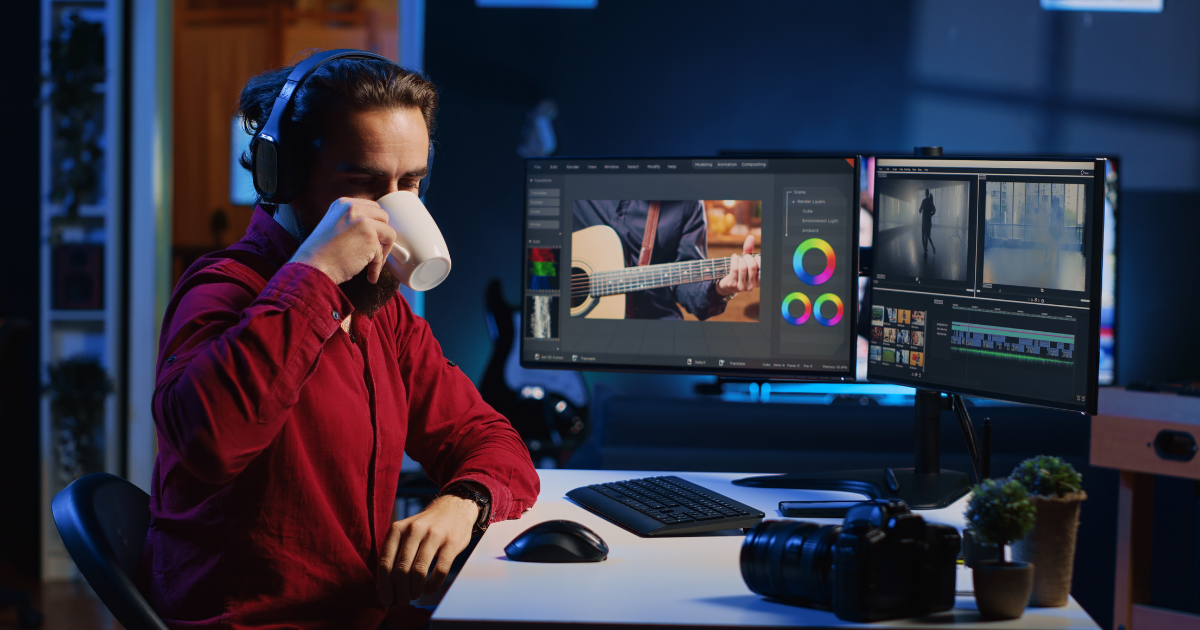Introduction
Email templates may come in all styles, but when it comes to size, there’s a proven formula that ensures success across devices. Whether targeting mobile-first audiences or desktop readers, finding the ideal template dimensions is critical for readability, loading speed, and consistent design. This article will explore how smart sizing decisions can improve email performance, avoid rendering issues, and create a seamless experience for every subscriber, no matter their device.
Why email template size still matters today
When sending marketing emails, the size of your template can make a big difference. If it’s too wide, your email might get cut off on mobile phones. If it’s too heavy, it might load slowly or get clipped in Gmail. A Litmus survey found that 60% of brands rely on email templates, which shows how common and important they are. For example, if a brand sends a wide 800-pixel email, it may look great on a desktop but appear broken on a mobile screen. That’s why most marketers stick to a safe width of 600 pixels. Choosing the right size helps emails display correctly, load quickly, and look good on all devices—from phones to desktops—so no reader gets a bad experience. By focusing on email template customization, you can ensure that every element, from the width to the images, is optimized for different screen sizes. This way, your emails not only perform well but also offer a polished, user-friendly experience for everyone, regardless of the device they use.
What’s the sweet spot for email width?
Most email marketers use a width between 600 and 640 pixels for desktop emails because it works well with almost all email clients. For mobile, 320 pixels is the sweet spot since most phones are designed to display that width clearly without zooming or scrolling sideways. If your email is wider, like 700 pixels, it might get cut off or look broken. If it’s too narrow, your content might look squished. Brands like Wet n Wild use a 610-pixel width to make sure their emails look clean and balanced on both desktop and mobile. To be safe, always test your emails using tools like Litmus or Email on Acid. This helps you catch any layout problems before your readers do.
Let’s talk about height—how long is too long?
For most email campaigns, a height of around 1500 pixels is perfect. It provides enough space for content without overwhelming the reader. However, for newsletters or transactional emails, you can stretch to 3000 pixels—just make sure to organize the content well. Break it into scannable blocks with clear sections, so your readers don’t get lost. Always place important content, like the subject line and call-to-action buttons, within the first 300–500 pixels. Brands like Cuyana do this effectively, keeping their long emails easy to read by using well-structured content blocks. Remember, a long email isn’t bad if it’s easy to navigate!
Keeping file size under control
Email file size is just as important as dimensions when it comes to performance. If an email exceeds 102 KB, Gmail will clip it, cutting off part of the message. To avoid this, aim for an HTML weight of 75 KB or less. Brands like Cartier keep their emails under 75 KB to ensure quick loading. Compress your images, limit the use of GIFs, and reduce unnecessary HTML code to keep things light. A minimalist design also helps—focusing on key content and cutting back on extras can improve load times and create a smoother mobile experience for your readers.
Images, banners, and GIFs—what size works best?
When using images, banners, and GIFs in your email, size matters for both appearance and performance. For product images, aim for 600×650 px, while banners should be around 600×730 px. GIFs should stay under 500 KB to avoid slowing down load times. Compress visuals to keep file sizes small without sacrificing clarity—tools like TinyPNG can help. If your images are large, consider hosting them externally and linking to them in the email. This keeps your email lighter while still showcasing eye-catching visuals. Brands like Wet n Wild use well-sized banners and images to maintain quality without compromising performance.
How to make your emails look great on any device
To ensure your emails look great on any device, focus on responsive design. Start with media queries that adjust styles based on the screen size, and use fluid layouts that scale smoothly on mobile and desktop. Always think mobile-first—designing for smaller screens first ensures your email will perform well across all devices. Testing tools like Litmus and Email on Acid help you check how your email renders across different clients. On mobile, keep CTA buttons large and easy to tap, and ensure key content remains visible without scrolling. Whether the email is viewed vertically or horizontally, the goal is to make it user-friendly and visually appealing on any device.
Conclusion
Email design isn’t just about creativity—it’s also about precision. By getting the dimensions right, marketers can avoid clipping issues, improve load speeds, and ensure a consistent experience across all devices. Whether you’re working with standard sizes or pushing creative boundaries, always prioritize compatibility and test thoroughly. The right template size can be the difference between a message that delights and one that disappears unread.















